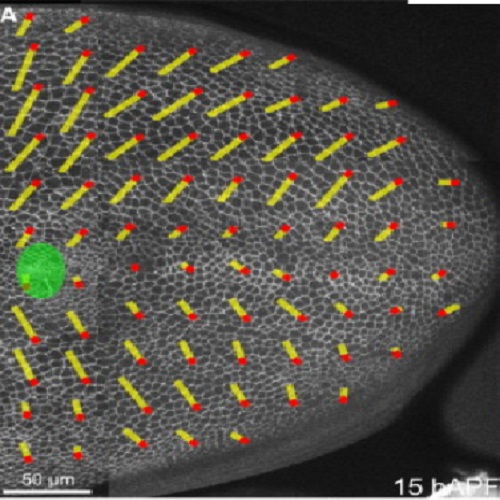Cell flow reorients the axis of planar polarity in the wing epithelium of Drosophila.
Planar cell polarity (PCP) proteins form polarized cortical domains that govern polarity of external structures such as hairs and cilia in both vertebrate and invertebrate epithelia. The mechanisms that globally orient planar polarity are not understood, and are investigated here in the Drosophila wing using a combination of experiment and theory. Planar polarity arises during growth and PCP domains are initially oriented toward the well-characterized organizer regions that control growth and patterning. At pupal stages, the wing hinge contracts, subjecting wing-blade epithelial cells to anisotropic tension in the proximal-distal axis. This results in precise patterns of oriented cell elongation, cell rearrangement and cell division that elongate the blade proximo-distally and realign planar polarity with the proximal-distal axis. Mutation of the atypical Cadherin Dachsous perturbs the global polarity pattern by altering epithelial dynamics. This mechanism utilizes the cellular movements that sculpt tissues to align planar polarity with tissue shape.

- Cell 2010 Sep 3;142(5):773-86
- 2010
- Developmental Biology
- 20813263
- PubMed
Enabled by:
